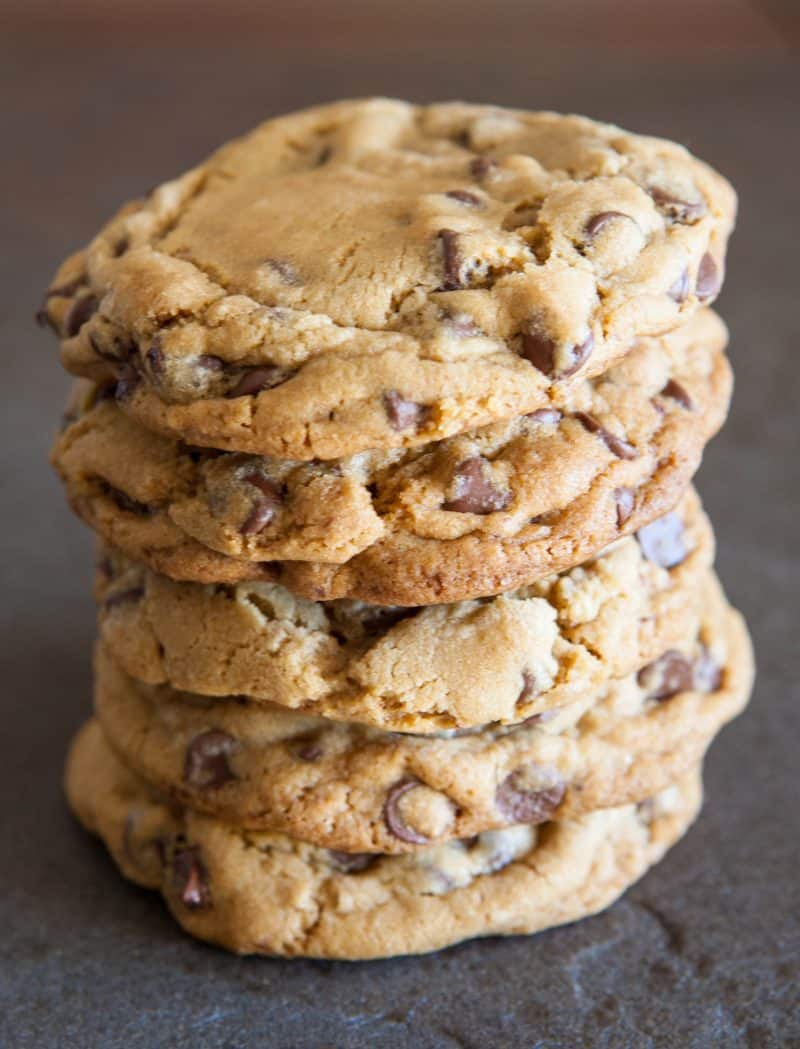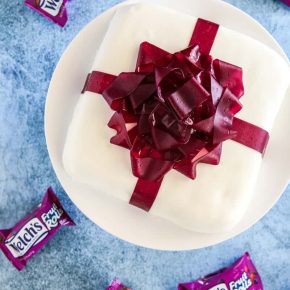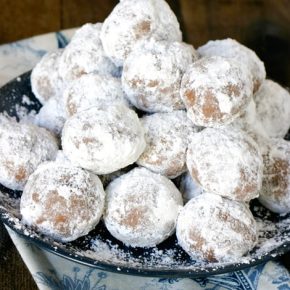NY Times Chocolate Chip Cookies
I’ve been making the same basic chocolate chip cookie for years. It’s a slight variation of the Alton Brown chewy chocolate chip cookie, and my family loves it. But after seeing this New York Times cookie time and time again, I knew it was time to give it a try. So on Christmas eve, we made these colossal cookies for Santa.
These cookies were huge, decadent and perfect. I’ve never had anything like them. I don’t think I’ll be going back to my old recipe anytime soon. My family loved them too. They stay soft and chewy for days too. But if you don’t want to make the whole batch, you can freeze the cookie dough balls and bake them one at a time when you get a chocolate chip cookie craving.
These cookies are the perfect pairing for a big tall glass of milk. Speaking of milk, are you getting enough dairy in your diet? Milk, cheese and yogurt provide nine essential nutrients (calcium, potassium, phosphorus, protein, vitamin D, vitamin A, vitamin B12, riboflavin, and niacin). Working together, these nutrients keep the body in optimum health.
- Dairy is best known as an excellent source of calcium, helping to build and maintain bone mass and strengthening teeth. Calcium also is important for nerves, muscle contraction, and blood clotting.
- Potassium helps regulate the body’s fluid balance and maintains healthy blood pressure, muscle activity and contraction.
- Phosphorus helps strengthen bones and generate energy in the body.
- Protein is essential for building and repairing tissue, maintaining fluid balance, transporting nutrients, and aiding
- in muscle contraction.
- Vitamin D is “the sunshine vitamin”. It promotes calcium absorption and enhances bone strength. Milk is one of the few dietary sources of vitamin D. Some vitamin D-fortified cheeses and yogurts are also available.
- Vitamin A helps with vision, skin, and strengthens the immune system. It is also important for bone growth.
- Vitamin B12 helps maintain red blood cells and nerves.
- Riboflavin, or vitamin B2, helps convert food into energy for our bodies.
Here are some tips on how to incorporate real dairy products into your
diet:
- Include milk as a beverage at meals
- Use low-fat or fat-free milk instead of water to prepare oatmeal and hot cereals
- Make a dip for fruits or vegetables from yogurt
- Top casseroles, soups, stews, or vegetables with shredded cheese
- Make fruit-yogurt smoothies in the blender
- If you are lactose intolerant, choose cheeses or yogurts that contain minimal lactose, or lactose-free milk

Yield: 1 1/2 dozen 5-inch cookies
NY Times Chocolate Chip Cookies
Ingredients:
2 cups minus 2 tablespoons (8 1/2 ounces) cake flour
1 2/3 cups (8 1/2 ounces) bread flour
1 1/4 teaspoons baking soda
1 1/2 teaspoons baking powder
1 1/2 teaspoons coarse salt
2 1/2 sticks (1 1/4 cups) unsalted butter
1 1/4 cups (10 ounces) light brown sugar
1 cup plus 2 tablespoons (8 ounces) granulated sugar
2 large eggs
2 teaspoons natural vanilla extract
1 1/4 pounds bittersweet chocolate disks or fèves, at least 60 percent cacao content (we used semi-sweet chocolate chips instead)
Sea salt (we omitted)
Directions:
1. Sift flours, baking soda, baking powder and salt into a bowl. Set aside.
2. Using a mixer fitted with paddle attachment, cream butter and sugars together until very light, about 5 minutes. Add eggs, one at a time, mixing well after each addition. Stir in the vanilla. Reduce speed to low, add dry ingredients and mix until just combined, 5 to 10 seconds. Drop chocolate pieces in and incorporate them without breaking them. Press plastic wrap against dough and refrigerate for 24 to 36 hours. Dough may be used in batches, and can be refrigerated for up to 72 hours. (We deep froze our dough to quick chill for about 2 hours. The dough really has to be very cold to work.)
3. When ready to bake, preheat oven to 350 degrees. Line a baking sheet with parchment paper or a nonstick baking mat.
4. Scoop 6 3 1/2-ounce mounds of dough (the size of generous golf balls) onto baking sheet, making sure to turn horizontally any chocolate pieces that are poking up; it will make for a more attractive cookie. Sprinkle lightly with sea salt and bake until golden brown but still soft, 18 to 20 minutes. Transfer sheet to a wire rack for 10 minutes, then slip cookies onto another rack to cool a bit more. Repeat with remaining dough, or reserve dough, refrigerated, for baking remaining batches the next day.
RECIPE NOTES:
Recipe from New York Times.
Did you make this recipe?
Be sure to share on Instagram with the hashtag #EclecticRecipes and tag me, @EclecticRecipes!About The REAL® Seal
The REAL® Seal is the only assurance that what you are buying is made entirely with the wholesome goodness of U.S.-produced cow’s milk. When you buy only products with the REAL® Seal, you can trust that you are buying only products or foods made from cows milk produced in the U.S. Milk and dairy foods are a core part of a healthy diet recommended by the 2010 Dietary Guidelines for Americans (DGA). The DGA recommends 3 servings of low-fat or fat-free milk or milk products for those 9 years or older, 2.5 servings for those 4-8 years old, and 2 servings for those 2-3 years old. Americans are currently consuming about 2 dairy servings per day on average (1.8).
This post sponsored by Real Seal. All opinions 100% mine.










